Discover the top 9 Mother of Thousands varieties, also known as Mother of Millions, in our detailed guide. Learn about their unique features, ideal growing conditions and care tips to keep these fascinating succulents thriving. Perfect for both novice and experienced gardeners.
Mother of Thousands, scientifically known as Kalanchoe daigremontiana, is a mesmerizing plant that enchants gardeners and plant enthusiasts alike. This unique succulent, renowned for its ability to produce countless tiny plantlets along its leaf edges, has earned it the affectionate nicknames of “Mother of Thousands” or “Mother of Millions.” These robust, easy-to-grow plants are perfect for both novice and experienced gardeners. With an array of varieties available, each boasting distinct characteristics and vibrant aesthetics, it’s no wonder that the Mother of Thousands has captured the hearts of so many.
In this guide, we’ll delve into the nine best Mother of Thousands varieties, showcasing their unique attributes and care requirements, so you can find the perfect plant to add to your collection.
1. Kalanchoe daigremontiana – The Classic Mother of Thousands
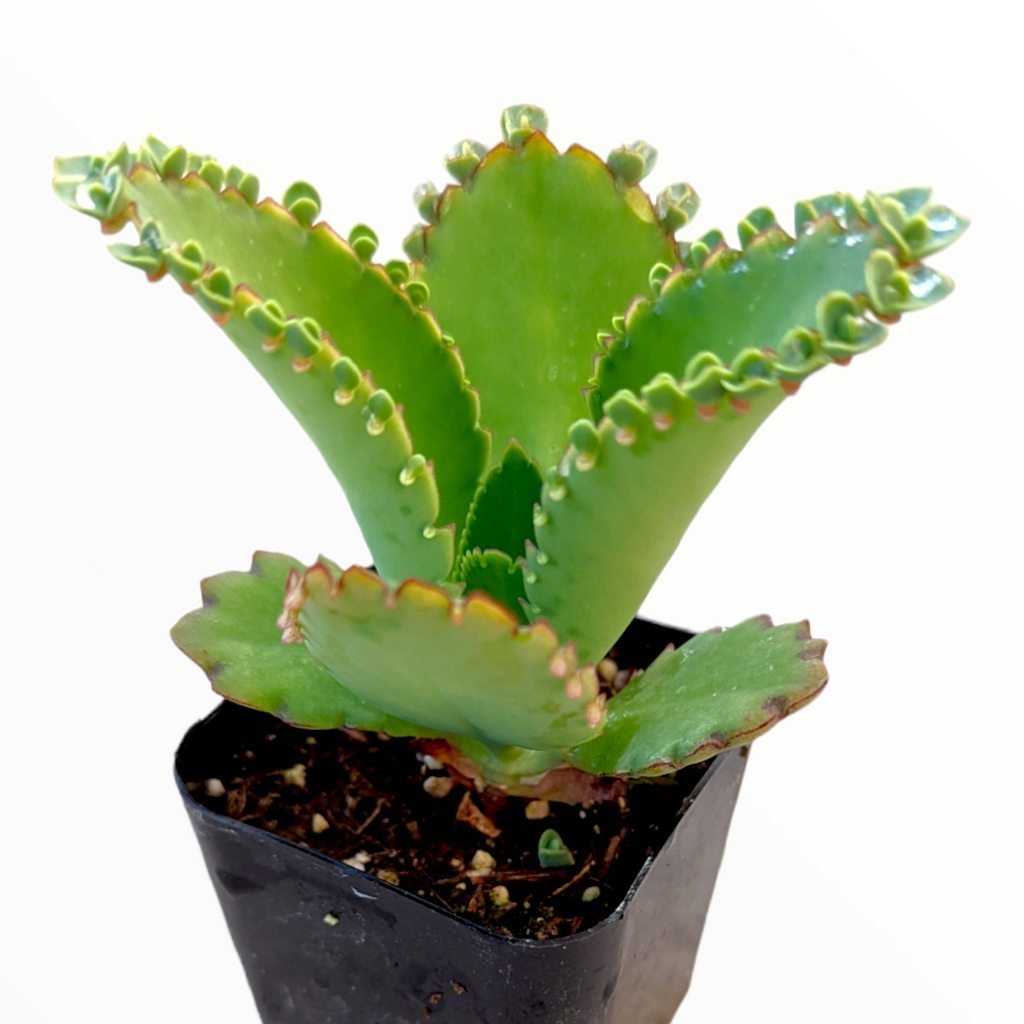
Here’s an information chart for Kalanchoe daigremontiana:
| Attribute | Details |
|---|---|
| Botanical Name | Kalanchoe daigremontiana |
| Common Name | Mother of Thousands, Alligator Plant |
| Plant Family | Crassulaceae |
| Hardiness Zone | USDA zones 9-11 |
| Sun Exposure | Full sun to partial shade |
| Soil Type | Well-drained, sandy or cactus mix |
| Watering | Low to moderate; allow soil to dry between waterings |
| Growth Habit | Upright, succulent |
| Height/Spread | 1-3 feet tall / 1-2 feet wide |
| Special Features | Tolerates drought, produces plantlets along leaf edges, unique foliage |
Overview and Unique Features
Kalanchoe daigremontiana, the quintessential Mother of Thousands, stands out with its striking, fleshy leaves that can grow up to six inches long. The leaves are typically a grey-green hue, adorned with reddish-purple spots on the underside. Along the edges of these leaves, countless tiny plantlets form, ready to drop and take root wherever they land. This propagation method makes Kalanchoe daigremontiana not only fascinating to observe but also incredibly easy to cultivate.
Ideal Growing Conditions
- Light: Prefers bright, indirect sunlight. Can tolerate direct sunlight but should be gradually acclimated to prevent leaf burn.
- Water: Water thoroughly but allow the soil to dry out between watering. Overwatering can lead to root rot.
- Soil: Well-draining, sandy soil is ideal. A cactus or succulent mix works perfectly.
- Temperature: Thrives in temperatures between 60-85°F (15-29°C). Protect from frost.
Maintenance Tips
Regularly check for and remove any fallen plantlets to prevent overcrowding. Prune the plant to maintain its shape and encourage healthy growth.
2. Kalanchoe tubiflora – The Chandelier Plant

Here’s an information chart for Kalanchoe tubiflora:
| Attribute | Details |
|---|---|
| Botanical Name | Kalanchoe tubiflora |
| Common Name | Chandelier Plant, Mother of Thousands |
| Plant Family | Crassulaceae |
| Hardiness Zone | USDA zones 9-11 |
| Sun Exposure | Full sun to partial shade |
| Soil Type | Well-drained, sandy or cactus mix |
| Watering | Low to moderate; allow soil to dry between waterings |
| Growth Habit | Upright, succulent |
| Height/Spread | 1-3 feet tall / 1-2 feet wide |
| Special Features | Tolerates drought, unique tubular leaves with plantlets at margins, suitable for containers |
Overview and Unique Features
Kalanchoe tubiflora, commonly known as the Chandelier Plant or Mother of Millions, is distinguished by its tubular, grey-green leaves that grow in a whorl around the stem. These leaves produce small, cylindrical plantlets at their tips, which drop and easily root in the soil. The Chandelier Plant can reach up to three feet in height, making it a striking addition to any succulent garden.
Ideal Growing Conditions
- Light: Enjoys full sun to partial shade. Provide protection from intense afternoon sun in hotter climates.
- Water: Drought-tolerant. Water sparingly and allow the soil to dry out completely between watering.
- Soil: Prefers well-draining soil. A mix of sand, perlite, and potting soil works well.
- Temperature: Grows best in temperatures between 65-75°F (18-24°C). Protect from temperatures below 50°F (10°C).
Maintenance Tips
Due to its vigorous growth, regular pruning is necessary to manage its size and shape. Ensure proper ventilation around the plant to prevent mold and mildew.
3. Kalanchoe pinnata – The Cathedral Bells
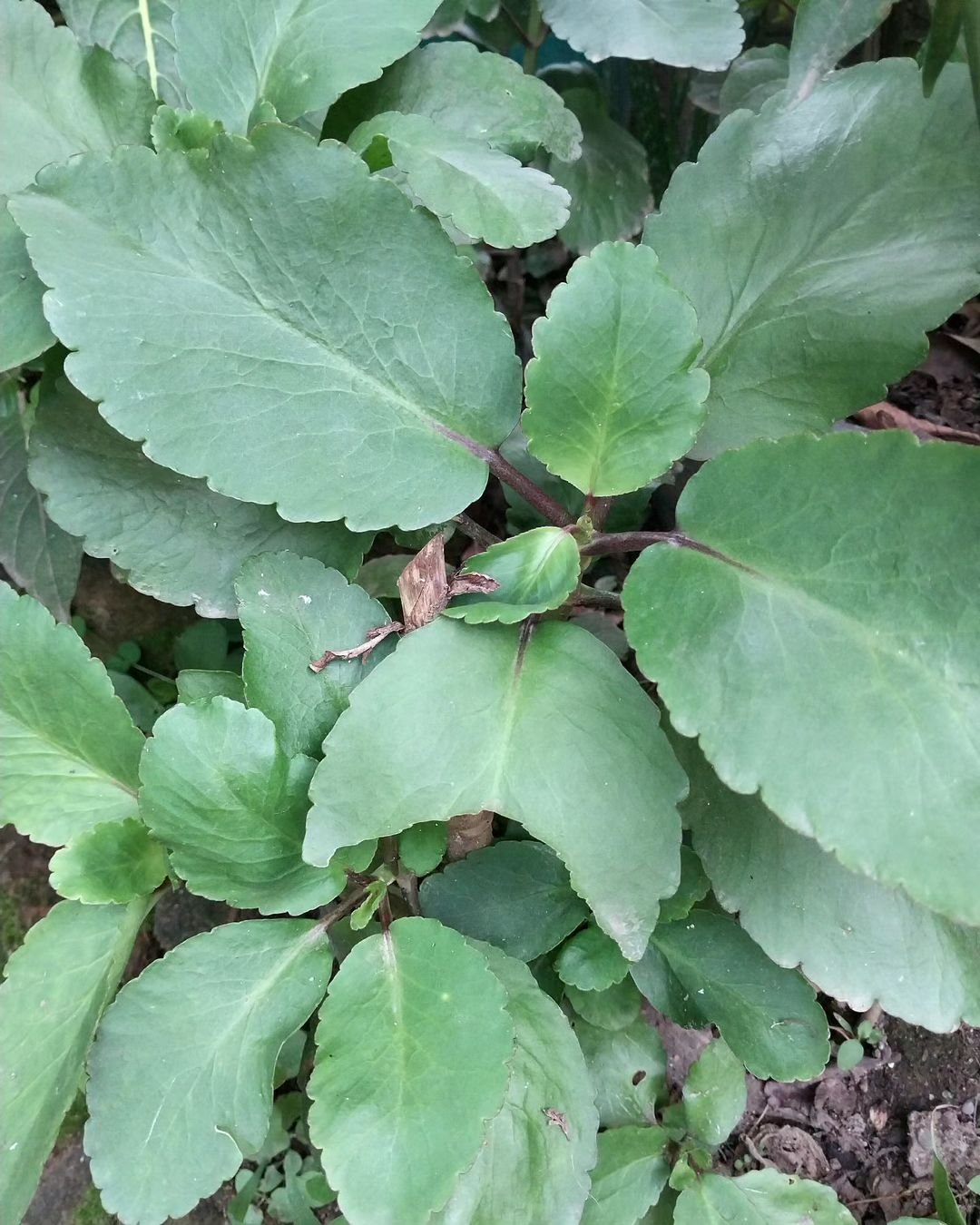
Here’s an information chart for Kalanchoe pinnata:
| Attribute | Details |
|---|---|
| Botanical Name | Kalanchoe pinnata |
| Common Name | Cathedral Bells, Air Plant, Life Plant, Miracle Leaf |
| Plant Family | Crassulaceae |
| Hardiness Zone | USDA zones 9-11 |
| Sun Exposure | Full sun to partial shade |
| Soil Type | Well-drained, sandy or cactus mix |
| Watering | Low to moderate; allow soil to dry between waterings |
| Growth Habit | Upright, succulent |
| Height/Spread | 2-4 feet tall / 1-2 feet wide |
| Special Features | Tolerates drought, produces plantlets from leaf margins, medicinal uses, unique bell-shaped flowers |
Overview and Unique Features
Kalanchoe pinnata, also known as Cathedral Bells or Air Plant, is notable for its large, fleshy leaves with scalloped edges. This variety produces plantlets along the margins of its leaves, which are capable of growing into new plants when they fall off. The Cathedral Bells plant can also bloom with bell-shaped flowers, adding to its ornamental appeal.
Ideal Growing Conditions
- Light: Prefers bright, indirect sunlight. Can tolerate some direct sunlight if acclimated slowly.
- Water: Water thoroughly but infrequently. Let the soil dry out between watering sessions.
- Soil: Well-draining soil, such as a cactus mix, is preferred.
- Temperature: Optimal growth occurs in temperatures between 60-80°F (16-27°C). Sensitive to frost.
Maintenance Tips
To encourage blooming, provide a period of cooler temperatures and reduced watering during the winter months. Remove any dead or damaged leaves to maintain plant health.
4. Kalanchoe laetivirens – The Mother of Thousands
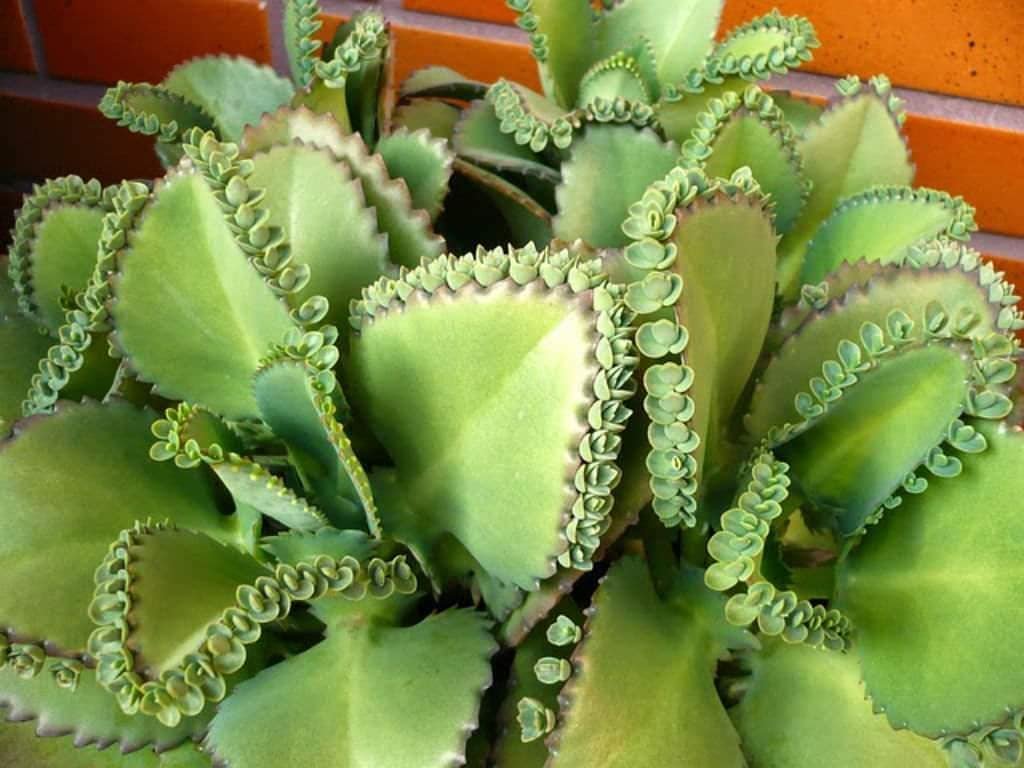
Here’s an information chart for Kalanchoe laetivirens:
| Attribute | Details |
|---|---|
| Botanical Name | Kalanchoe laetivirens |
| Common Name | Mother of Thousands, Green Mother of Thousands |
| Plant Family | Crassulaceae |
| Hardiness Zone | USDA zones 9-11 |
| Sun Exposure | Full sun to partial shade |
| Soil Type | Well-drained, sandy or cactus mix |
| Watering | Low to moderate; allow soil to dry between waterings |
| Growth Habit | Upright, succulent |
| Height/Spread | 1-3 feet tall / 1-2 feet wide |
| Special Features | Tolerates drought, produces plantlets along leaf edges, easy to propagate |
Overview and Unique Features
Kalanchoe laetivirens, another variety of the Mother of Thousands, showcases vibrant green leaves with toothed edges. Like other varieties, it produces numerous plantlets along its leaf margins. This plant is prized for its lush, green foliage and its ability to quickly propagate, making it a favorite among succulent enthusiasts.
Ideal Growing Conditions
- Light: Thrives in bright, indirect light. Can adapt to lower light conditions but may grow leggy.
- Water: Allow the soil to dry out completely between waterings. Overwatering should be avoided.
- Soil: A well-draining mix, such as cactus or succulent soil, is ideal.
- Temperature: Prefers temperatures between 65-75°F (18-24°C). Avoid exposure to frost.
Maintenance Tips
To prevent overcrowding, regularly remove fallen plantlets and consider potting them separately. Prune to encourage bushier growth.
5. Kalanchoe fedtschenkoi – The Lavender Scallops

Here’s an information chart for Kalanchoe fedtschenkoi:
| Attribute | Details |
|---|---|
| Botanical Name | Kalanchoe fedtschenkoi |
| Common Name | Lavender Scallops, South American Air Plant |
| Plant Family | Crassulaceae |
| Hardiness Zone | USDA zones 9-11 |
| Sun Exposure | Full sun to partial shade |
| Soil Type | Well-drained, sandy or cactus mix |
| Watering | Low to moderate; allow soil to dry between waterings |
| Growth Habit | Spreading, succulent |
| Height/Spread | 1-2 feet tall / 1-3 feet wide |
| Special Features | Tolerates drought, colorful foliage with scalloped edges, produces plantlets, suitable for containers |
Overview and Unique Features
Kalanchoe fedtschenkoi, also known as Lavender Scallops, is admired for its beautiful lavender-grey leaves with scalloped edges. This variety produces plantlets at the leaf margins, which can grow into new plants. It also features delicate, bell-shaped flowers that add a splash of color.
Ideal Growing Conditions
- Light: Prefers full sun to partial shade. Intense sunlight enhances the leaf color.
- Water: Water sparingly and allow the soil to dry out between watering sessions.
- Soil: Well-draining soil, such as a cactus mix, is recommended.
- Temperature: Grows best in temperatures between 60-75°F (15-24°C). Protect from frost.
Maintenance Tips
Prune regularly to maintain its shape and encourage blooming. Remove fallen plantlets to prevent overcrowding.
6. Kalanchoe marmorata – The Penwiper Plant
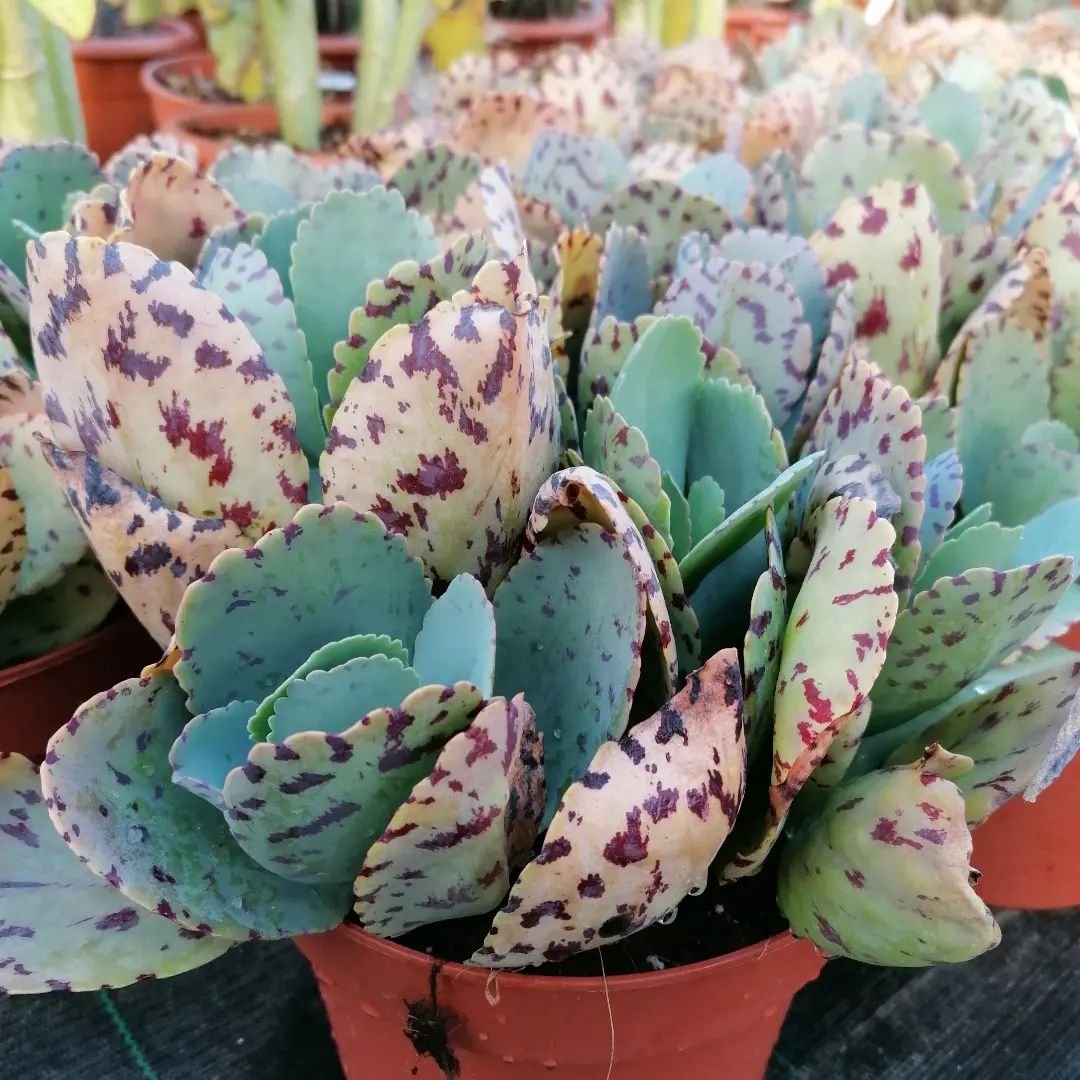
Here’s an information chart for Kalanchoe marmorata:
| Attribute | Details |
|---|---|
| Botanical Name | Kalanchoe marmorata |
| Common Name | Penwiper Plant, Spotted Kalanchoe |
| Plant Family | Crassulaceae |
| Hardiness Zone | USDA zones 9-11 |
| Sun Exposure | Full sun to partial shade |
| Soil Type | Well-drained, sandy or cactus mix |
| Watering | Low to moderate; allow soil to dry between waterings |
| Growth Habit | Upright, succulent |
| Height/Spread | 1-2 feet tall / 1-2 feet wide |
| Special Features | Tolerates drought, unique mottled foliage, produces clusters of white flowers, suitable for containers |
Overview and Unique Features
Kalanchoe marmorata, commonly called the Penwiper Plant, stands out with its large, grey-green leaves adorned with maroon spots. This variety produces plantlets along the edges of its leaves, adding to its unique appearance. The Penwiper Plant can also produce white, star-shaped flowers, enhancing its ornamental value.
Ideal Growing Conditions
- Light: Thrives in bright, indirect sunlight. Can tolerate some direct sunlight if gradually acclimated.
- Water: Water deeply but infrequently. Allow the soil to dry out between waterings.
- Soil: Well-draining soil, such as a succulent or cactus mix, is ideal.
- Temperature: Optimal growth occurs in temperatures between 60-75°F (15-24°C). Avoid exposure to frost.
Maintenance Tips
Prune to maintain shape and remove any dead or damaged leaves. Regularly remove fallen plantlets to prevent overcrowding.
7. Kalanchoe beharensis – The Velvet Elephant Ear

Here’s an information chart for Kalanchoe beharensis:
| Attribute | Details |
|---|---|
| Botanical Name | Kalanchoe beharensis |
| Common Name | Felt Bush, Elephant Ear Kalanchoe, Velvet Elephant Ear |
| Plant Family | Crassulaceae |
| Hardiness Zone | USDA zones 10-12 |
| Sun Exposure | Full sun to partial shade |
| Soil Type | Well-drained, sandy or cactus mix |
| Watering | Low to moderate; allow soil to dry between waterings |
| Growth Habit | Upright, tree-like succulent |
| Height/Spread | 3-10 feet tall / 2-3 feet wide |
| Special Features | Tolerates drought, large velvety leaves, unique sculptural form, suitable for containers and landscapes |
Overview and Unique Features
Kalanchoe beharensis, known as the Velvet Elephant Ear, is a striking variety with large, velvety leaves that can grow up to a foot long. These leaves are a blue-grey color with brownish undersides. Although not as prolific in producing plantlets as other varieties, its impressive foliage makes it a standout.
Ideal Growing Conditions
- Light: Prefers bright, indirect light. Can tolerate some direct sunlight if acclimated slowly.
- Water: Water sparingly and allow the soil to dry out between waterings.
- Soil: A well-draining mix, such as cactus or succulent soil, is preferred.
- Temperature: Thrives in temperatures between 60-80°F (16-27°C). Protect from frost.
Maintenance Tips
Due to its size, ensure it has plenty of space to grow. Prune to maintain its shape and remove any dead or damaged leaves.
8. Kalanchoe blossfeldiana – The Flaming Katy
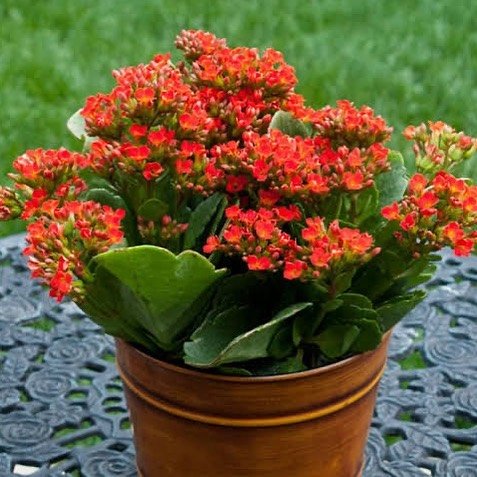
Here’s an information chart for Kalanchoe blossfeldiana:
| Attribute | Details |
|---|---|
| Botanical Name | Kalanchoe blossfeldiana |
| Common Name | Flaming Katy, Christmas Kalanchoe |
| Plant Family | Crassulaceae |
| Hardiness Zone | USDA zones 10-12 |
| Sun Exposure | Full sun to partial shade |
| Soil Type | Well-drained, sandy or cactus mix |
| Watering | Low to moderate; allow soil to dry between waterings |
| Growth Habit | Compact, bushy succulent |
| Height/Spread | 6-18 inches tall / 6-18 inches wide |
| Special Features | Tolerates drought, vibrant and long-lasting flowers in various colors, suitable for containers and indoor growing |
Overview and Unique Features
Kalanchoe blossfeldiana, commonly known as Flaming Katy, is prized for its vibrant flowers that come in a range of colors, including red, pink, yellow and orange. While not typically known for producing plantlets, its stunning blooms and compact size make it a popular choice for indoor gardens.
Ideal Growing Conditions
- Light: Prefers bright, indirect sunlight. Can tolerate lower light but may produce fewer flowers.
- Water: Allow the soil to dry out between waterings. Overwatering should be avoided.
- Soil: A well-draining mix, such as a succulent or cactus soil, is ideal.
- Temperature: Grows best in temperatures between 60-75°F (15-24°C). Protect from frost.
Maintenance Tips
Deadhead spent flowers to encourage new blooms. Prune to maintain its shape and remove any dead or damaged leaves.
9. Kalanchoe tomentosa – The Panda Plant
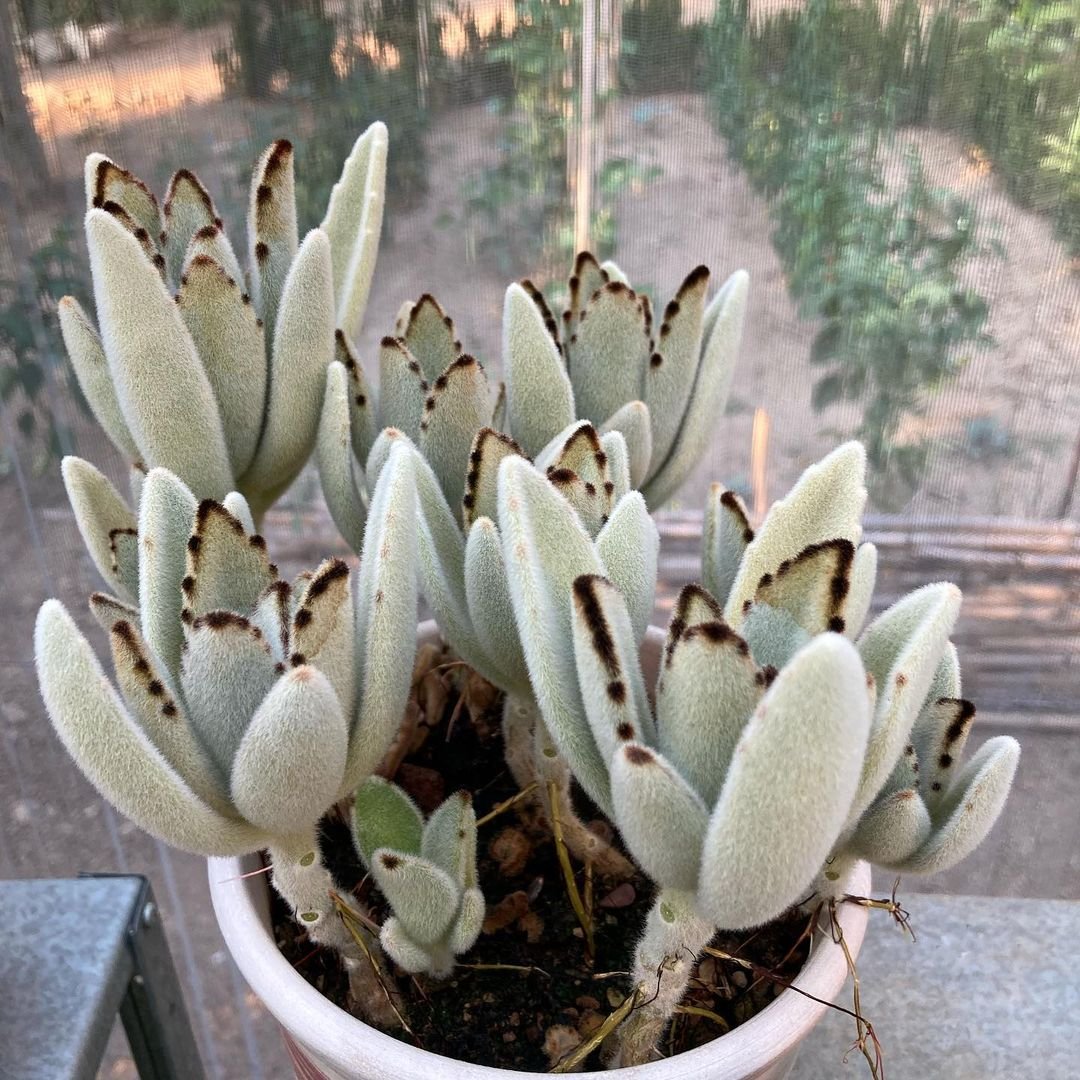
Here’s an information chart for Kalanchoe tomentosa:
| Attribute | Details |
|---|---|
| Botanical Name | Kalanchoe tomentosa |
| Common Name | Panda Plant, Chocolate Soldier |
| Plant Family | Crassulaceae |
| Hardiness Zone | USDA zones 9-11 |
| Sun Exposure | Full sun to partial shade |
| Soil Type | Well-drained, sandy or cactus mix |
| Watering | Low; allow soil to dry between waterings |
| Growth Habit | Upright, compact succulent |
| Height/Spread | 1-2 feet tall / 1-2 feet wide |
| Special Features | Tolerates drought, velvety leaves with brown edges, suitable for containers and indoor growing |
Overview and Unique Features
Kalanchoe tomentosa, also known as the Panda Plant, is cherished for its soft, fuzzy leaves with brown edges. While not a prolific plantlet producer, its unique texture and appearance make it a favorite among succulent enthusiasts.
Ideal Growing Conditions
- Light: Thrives in bright, indirect sunlight. Can tolerate some direct sunlight if acclimated gradually.
- Water: Water sparingly, allowing the soil to dry out completely between waterings.
- Soil: Prefers well-draining soil, such as a cactus or succulent mix.
- Temperature: Optimal growth occurs in temperatures between 60-75°F (15-24°C). Avoid frost exposure.
Maintenance Tips
Prune regularly to maintain the plant’s shape and remove any dead or damaged leaves. Ensure proper air circulation to prevent mold and mildew growth on the fuzzy leaves.
Caring for Your Mother of Thousands Varieties
To ensure your Mother of Thousands varieties thrive, it’s crucial to understand their specific needs and provide the right conditions. Here’s a detailed guide to help you maintain these fascinating plants.
Light Requirements
Mother of Thousands plants generally prefer bright, indirect sunlight. While some varieties can tolerate direct sunlight, it’s best to acclimate them slowly to avoid leaf burn. In indoor settings, placing them near a south or west-facing window can provide adequate light.
Watering Practices
These succulents are drought-tolerant and require minimal watering. Overwatering is a common mistake that can lead to root rot. Ensure the soil is completely dry before watering again. During the growing season, water more frequently, but reduce watering in the winter months when the plant is dormant.
Soil and Fertilization
Well-draining soil is essential for the health of Mother of Thousands plants. A mix of cactus or succulent soil with added perlite or sand is ideal. Fertilize sparingly, using a balanced, diluted succulent fertilizer during the growing season.
Temperature and Humidity
Most Mother of Thousands varieties thrive in temperatures between 60-80°F (15-27°C). Protect them from frost and avoid placing them in cold drafts or extremely hot environments. They prefer low to moderate humidity levels, making them well-suited for indoor environments.
Pruning and Propagation
Regular pruning helps maintain the plant’s shape and encourages healthy growth. Remove any dead or damaged leaves, and regularly check for fallen plantlets to prevent overcrowding. Propagation is simple—plantlets that drop from the mother plant will easily root in soil and grow into new plants.
Frequently Asked Questions (FAQs)
1. How do I propagate Mother of Thousands plants?
Propagation is straightforward. The tiny plantlets that form along the leaf margins will naturally drop off and root in the soil. You can also gently remove these plantlets and plant them in well-draining soil to encourage growth.
2. What are common problems with Mother of Thousands plants?
Common issues include overwatering, which can lead to root rot, and pests such as aphids and mealybugs. Ensuring proper watering practices and keeping an eye out for pests can help maintain plant health.
3. Can Mother of Thousands be grown indoors?
Yes, Mother of Thousands can be successfully grown indoors. They thrive in bright, indirect light and can adapt well to indoor environments. Just ensure they receive enough light and are not overwatered.
4. Are Mother of Thousands plants toxic to pets?
Yes, Mother of Thousands plants are toxic to pets if ingested. They contain compounds that can cause gastrointestinal upset and other symptoms in cats and dogs. It’s best to keep these plants out of reach of pets.
5. How often should I repot Mother of Thousands plants?
Repotting every 2-3 years is generally sufficient. If the plant has outgrown its pot or the soil has become compacted, it may need to be repotted sooner. Use fresh, well-draining soil when repotting.
6. Why are the leaves of my Mother of Thousands plant turning yellow?
Yellow leaves can be a sign of overwatering or insufficient light. Ensure the soil is drying out between watering and provide adequate indirect sunlight. Adjusting these factors can help restore the plant’s health.
7. What should I do if my Mother of Thousands plant is leggy?
A leggy appearance typically indicates insufficient light. Move the plant to a brighter location with indirect sunlight. Pruning can also help encourage a more compact growth habit.
8. Can Mother of Thousands plants bloom indoors?
Yes, while it’s rare, Mother of Thousands plants can bloom indoors if they receive enough light and proper care. Flowering is more common in mature plants and those exposed to slightly cooler temperatures during winter.
9. What type of container is best for Mother of Thousands plants?
Choose a container with drainage holes to prevent waterlogging. Terracotta pots are ideal as they allow for better airflow and help prevent overwatering.
The diverse varieties of Mother of Thousands offer a fascinating and easy-to-care-for addition to any plant collection. From the classic Kalanchoe daigremontiana to the striking Velvet Elephant Ear, these succulents not only provide aesthetic appeal but also an engaging propagation process. By understanding their unique needs and providing the right care, you can enjoy the beauty and intrigue of these remarkable plants for years to come.
Whether you’re a seasoned gardener or a succulent novice, the Mother of Thousands varieties will captivate your interest and bring a touch of nature’s wonder into your home. Remember to follow the specific care guidelines for each variety to ensure they thrive and continue to produce their charming plantlets. Happy gardening!
Pingback: 10 Mesmerizing Pink Succulents You Need in Your Collection!
Pingback: Hyacinth Flowers: Essential Planting and Growing Tips
Pingback: Beautiful Trees That Start With ‘K’ - Gardener's School
Pingback: Guide to Greatness: Discovering Trees That Start with ‘G’ - Gardener's School
Pingback: How to Care for Petal Leaf Succulent: A Complete Guide